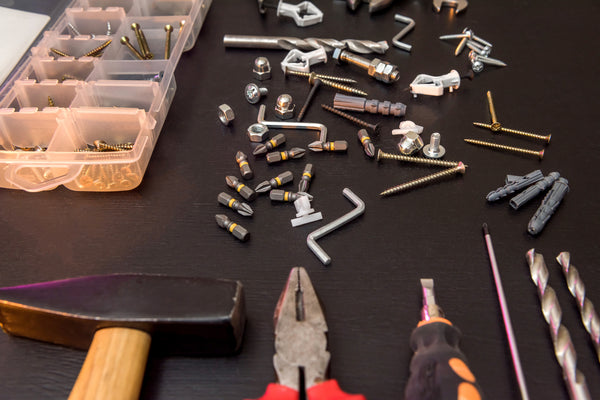In order to produce accurate and efficient work in numerous industries, high-quality tools are essential. This is especially true for professional tradespeople who require their tools to boast longevity and deliver optimal performance. To that end, detailed below are some of the most valuable insights into tool maintenance, with a special focus on drill bits. Tool maintenance doesn’t have to be a struggle; you just need to remember the essentials that are sure to keep your tools in the best condition possible.
The Importance of Tool Maintenance
There are a number of reasons tool maintenance is so important, but the most important one is safety. Regardless of industry, safety is the number one priority, and proper maintenance means you’re able to identify and rectify any potential safety hazards, reducing the likelihood of accidents occurring.
In addition to the all-important safety factor, well-maintained tools also result in enhanced performance. This is because when tools are properly maintained, they’re able to deliver consistency, resulting in reliability and high-quality outcomes.
Finally, well-maintained tools have a longer lifespan than those that are neglected. As a result, proper tool maintenance can save you money in the long run.
Tool Maintenance Tips
So, it’s clear that tool maintenance is incredibly important, but what does the process actually entail?
To begin with, you should always ensure your tools are clean. After every use, you should thoroughly clean your tools using a brush or cloth. This is the most effective means of removing dirt, debris, and residue. When it comes to rust or stubborn stains, a suitable cleaning agent and wire brush can be used.
Once your tools are all clean, you can apply lubricant to moving parts like blades, gears, and hinges. This is to reduce friction, resulting in rust being prevented and a smooth operation being carried out.
You can’t underestimate the impact of storage when it comes to tool maintenance, as they need to be protected from damage and moisture. As a result, tools should always be contained within a clean and dry place, which might include wall-mounted systems or toolboxes. Regardless of the storage solution you opt for, it’s all about accessibility and organisation.
Lastly, you should routinely inspect your tools to identify any wear and tear, damage, or loose components. This way, you can repair and replace any faulty parts as soon as they present themselves, ensuring your tools remain in optimal condition to operate safely and effectively.
Drill Bit Maintenance

Drill bits are among some of the most important tools to maintain, and they’re widely applied in a number of industries. These industries include construction, metalworking, woodworking, and so much more. To that avail, listed below are just some of the maintenance tips that should be followed when maximising the lifespan and performance of drill bits.
How long does a drill bit last?
There are multiple factors that contribute to the lifespan of a drill bit, such as the maintenance practices, the type of work it’s used for, and the material it’s drilling. Typically speaking, the best-quality drill bits are able to withstand 200 to 500 holes; however, this very much depends on various affecting factors. Regardless of the type of drill bit, though, routine maintenance and correct usage can help prolong their lifespan.
How often should I change my drill bit?
As previously mentioned, there are various factors that affect the frequency at which you should change your drill bits. This includes the following:
- The type of material being drilled – Naturally, harder materials, such as concrete or metal, will wear out drill bits faster than softer ones. This is due to harder materials placing additional stress on drill bits, meaning they’ll need to be changed more frequently.
- The workload – As with the type of material being drilled, using your drill bits more frequently will mean the wear and tear are accelerated, meaning more frequent replacements will likely be required.
- Indications of wear – Your drill bit will often tell you when it needs changing. This warning will come in the form of reduced cutting efficiency, chipping, and dullness. Any of these signs indicate that it’s time to change the bit.
- Performance – The bit’s performance will also indicate whether it’s time to change the bit. For instance, an inability to achieve clean holes, increased vibration, or decreased drilling speed are all indicators that the bit requires replacing.
Additional Tool Maintenance Considerations
Aside from drill bits, there are a number of other tools that require maintenance, and there are various aspects to keep in mind for carrying this out.
For instance, tools with blades require routine sharpening to ensure that efficient and precise cuts can be made. It’s important to follow manufacturer guidelines when conducting such a task.
Additionally, it’s absolutely essential that power tools are free from exposed or fraying wires. Any damaged cords must be repaired or replaced as a matter of urgency; however, it’s important to follow safety precautions during the repair process to avoid short circuits or electrical shocks.
In order to maintain accuracy, a number of precision tools will require periodic calibration. Again, the manufacturer’s recommendations will need to be followed to achieve such.

